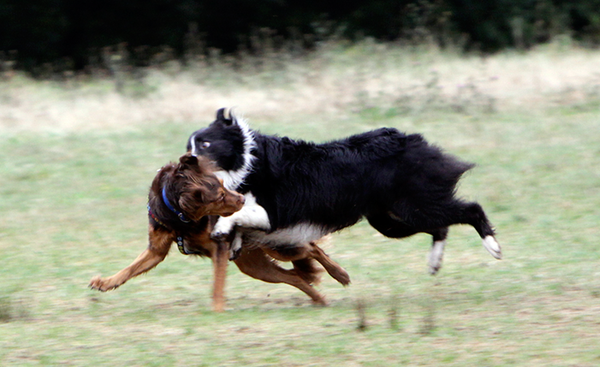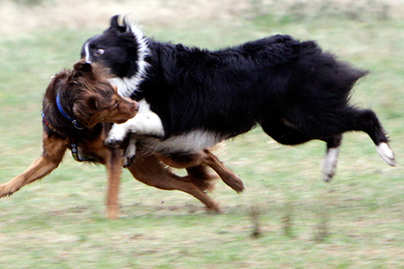co-written by Lorena Proia and AnnBeth Chinchillo, PT, CCRP

Photo credit: Heidi Mobley
Did you know that stretching is as important as regular exercise? It’s also the most neglected aspect of fitness for most of us, including our dogs. Our dogs play rough and a lack of flexibility, just like in humans, is a recipe for pulled or torn muscles and ligaments. You can't tell a dog to take it easy or to warm up before play. They usually go from 0 - 100 in the blink of an eye. Because of that, stretching is extremely important for them. To help you, help your dog, we worked with AnnBeth Chinchillo PT, CCRP to create a step by step guide to download for your reference.
It’s never too early or too late to start stretching your dog. While puppies are naturally flexible, they aren’t used to being handled starting young will get them used to it, and they'll enjoy stretching with you. Don’t worry though, if your dog is already a senior citizen, it’s never too late to start. Whatever their age, dogs can maintain and even improve with just a few minutes of stretching each day. When it comes to mobility and pain management, consistency is more important than intensity.
With the help of AnnBeth’s older dog, Baron, we’ll show you 5 stretches that will help improve your dog’s flexibility and help maintain his overall health.
We've created a free PDF that fully details each stretch with photos and directions. We recommend that you download and print these stretches, so that you can have them by your side to follow along as you take your dog through.
What are these stretches and why should I do them with my dog?
1. Hip Extensions and Psoas (Illiopsoas) stretch:
Hip dysplasia and arthritis is very common as dogs age, so stretching into hip extension is important.
2. Hamstring Stretch
Just like in humans, the hamstrings run up the back of the thigh and can get very tight, restricting full extension of the leg. Your dog should be able to stretch fully when running so they avoid injury.
3. Triceps Stretch
Dogs carry more weight on the front limbs than the back. Because of this, the shoulders work very hard and keeping them stretched will keep him comfortable.
4. Sitting squarely
Sitting isn’t just for obedience. Sitting squarely is very beneficial because it stretches the hips, knees, and ankles. (also known as the hocks in dogs)
5. Side Spine stretch
This stretch is especially important as a dog ages because of the natural stiffening of the spine. It is important that the dog bend to each side in order to keep a healthy flexible spine and avoid falling.
We've created a fully illustrated PDF for you to download, read, and use with your dog. Our time with our best friends is precious, so we don't want you spending any of it dealing with painful injuries.



